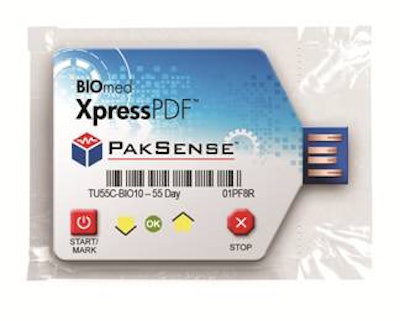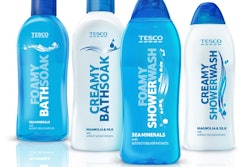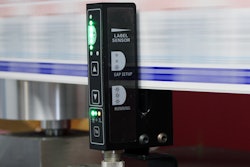And use your imagination. Think of what you want to achieve, and then find the right technology to make it happen.
1. Devise a plan. Start with what you hope to accomplish both short-term for shelf impact and long-term for brand building. Understand that committing to a long campaign is a wise decision to get the most out of your investment in time and money. Oftentimes, technologies can build on one another, establishing a brand story of innovation and consumer-centrism that resonates.
2. Have fun, add fun, and improve function. Delighting consumers can be achieved in a number of ways, but the ways might be category-specific. Humor that might succeed in beer or wine categories might not go over so well in personal care. Functionality or ease-of-use that might improve the product experience in home care may be perceived as frivolous in the food categories. Learn about the habits of the category shopper, and then try to delight them with something that adds value or fun to their lives.
3. Separate security strategies. Many label technologies discussed here could be used as entry-level brand protection initiatives. Graphics, effects, and printing techniques can offer brand protection through counterfeit deterrence. However, true brand protection requires a much more strategic campaign. (See: “Top considerations when implementing brand protection strategies.”)
4. Use metallic inks appropriately. Converters are reporting that their ink suppliers are now providing metallic inks that will work with more printing processes and substrates than ever, including clear film labels. Metallic printing inks for shrink-sleeve applications can now tolerate as much as 25% shrinkage while still maintaining the desired impression.
5. Consider “active” inks. You may have heard of scented inks, but converters are experimenting now with inks that consumers can taste. Time-sensitive inks have gotten better, where a color changes after a certain time to alert users about freshness and effectiveness. (Arm & Hammer uses this to signal consumers when it’s time to replace the baking soda in their fridge.) Thermochromic color-changing inks are also becoming more popular and less costly.
6. Could an LED label light up your life? Medea Spirits recently introduced an interactive bottle for vodka that lets retailers and consumers program messages right onto the bottle’s label. The messages scroll across the label panel, stock-ticker style, in bright blue, white, or pink letters. The label can store up to six messages, and two buttons control activating the label and toggling between the programmed messages.
7. E-packaging opens possibilities. Electronic packaging is a catchall phrase for a number of technologies that are growing rapidly in applications as costs come down. Functions range from tamper-evidence, error detection, freshness monitoring, color changing, motion graphics, sounds or music, and even controlled aroma release. No doubt, e-packaging currently attracts premium pricing most of the time, so it will likely add value rather than replace existing methods. The leaders making these new devices are establishing benchmarks for how consumers engage with e-packaging.
8. Remote-powered fun is a start. Remote-powered packages separate the display technology from the power source, which is delivered wirelessly. Imagine a store shelf full of packages that light up as you walk down the aisle. That can now be powered by a single power source, wirelessly. The technology also allows for data capture and the many other benefits that brings. Once the initial design is final and functional, it is easy to mass-print graphic elements that “light up” by program, motion sensor, or any other activation system.
9. Compliance packaging for your health. The healthcare category includes such things as packets of drug tablets that record which one was removed when so that patient compliance can be monitored. Also in the healthcare space are more efficient drug delivery packages and ones that actively prompt the user to take medication on time. These provide clear instructions by voice, for example, or a scrolling display in large print.
10. Give RFID a chance. Radio frequency identification (RFID) tags have begun to be used for unit-level applications, most often in the apparel and electronics categories. Aside from improving shipping efficiencies and inventory management, passive RFID tags have many advantages. They are robust for harsher environments, many tags can be read simultaneously, and they can provide sell-down data to retailers. One innovative use was by Oakley, which enhanced the in-store experience with mirror message displays that magically surprised shoppers trying on their sunglasses.
11. Augment your reality. Augmented reality technology creates three-dimensional images on smartphones that are pointed at packages, posters, or billboards. These are often promotions for products or entertainment, but they can also be actual interactive games. Some of these technologies don’t need a special tag, graphic element, or printing technology. Instead, they use graphic pattern recognition to “turn on” the package and start the graphics or the game on the phone.
12. Don’t let unattractiveness stop you. Unlike previous iterations of some of these label technologies, most today can be hidden on labels, contained within more attractive tags, or embedded in existing tags and labels.
13. Find the efficiencies. If you have a specific problem to solve, look at the technologies above for elegant solutions. For instance, a motorized tool manufacturer discovered just how costly its incomplete equipment shipments were. RFID tags helped make sure the equipment bundles leaving the plant were complete. Some of these technologies are more two-way data devices than one would think, and can gather information for more detailed analysis.
14. Use your imagination. Disney recently committed to a huge investment in ultra-convenient RFID bracelets, where the visitor will be able to use the bracelet as a room key, as theme-park tickets, and as a payment method for anything in the park. Whether Big Brother or not, tracking customers’ movements in a store or theme park can be valuable in correlating shopper interests for better store layout and more pertinent cross-selling opportunities.
Liked this article? Download the entire playbook here.

























